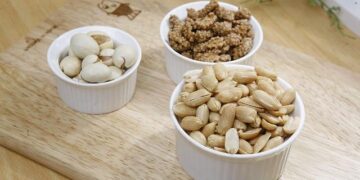A New Dawn: The Transformative Potential of BCI Technology for Individuals with Disabilities
In an age where technology plays a pivotal role in our daily lives, brain-computer interface (BCI) technology emerges as a transformative force for millions facing disabilities. This article delves into the remarkable capabilities of this innovative technology, envisioning a future where thoughts can seamlessly connect with machines. Such advancements promise to revolutionize communication, interaction, and engagement for individuals who have long faced barriers. Join us as we explore how BCI technology is not only enhancing abilities but also redefining independence and human connection.
Unleashing Accessibility: The Impact of Brain-Computer Interfaces
Brain-computer interfaces are reshaping accessibility by creating direct communication channels between the brain and external devices. This groundbreaking approach empowers users to engage with technology in unprecedented ways. The effects of these innovations permeate various aspects of everyday life:
- Enhanced Communication: Users can express their thoughts and feelings through advanced assistive devices.
- Improved Mobility: Wheelchairs and prosthetics can be maneuvered using brain signals, granting users greater freedom.
- Environmental Control: Smart home systems can respond to neural commands, simplifying routine tasks.
The influence of BCIs transcends mere functionality; it cultivates autonomy and dignity among users. As this field progresses, personalized applications are becoming increasingly viable. Here are some notable examples that showcase the adaptability of BCIs:
| Application | Description |
|—————————-|———————————————————–|
| Virtual Reality Therapy | Programs utilizing BCIs for mental health treatment |
| Touchless Device Control | Devices operated without physical contact |
| Assistive Technologies | Software integration aiding daily activities |
Fostering Independence Through Innovative BCI Solutions
BCI technology holds immense potential to transform how individuals with disabilities interact with their environments. By establishing direct connections between the human brain and external devices, BCIs facilitate unprecedented control over surroundings—ushering in an era marked by newfound independence. Users can operate assistive technologies, communicate effectively, and participate in leisure activities without traditional limitations.
The applications of BCI span numerous domains:
- Assistive Communication: Users generate speech or text solely through thought.
- Mobility Management: Wheelchairs or prosthetic limbs respond directly to brain activity.
- Home Automation Interaction: Mental commands allow control over household appliances.
Moreover, these technological strides promote mental well-being by fostering social inclusion and encouraging self-expression. A brief overview highlights key benefits associated with BCI use:
| Benefit | Description |
|—————————-|———————————————————-|
| Increased Autonomy | Empowers users to perform tasks independently |
| Enhanced Quality of Life | Encourages participation in social activities |
| Improved Communication | Provides new avenues for those with speech impairments |
Looking Ahead: Prioritizing Inclusivity and Ethics in BCI Development
As we advance further into the realm of Brain-Computer Interface (BCI) technology, it is essential that inclusivity and ethical considerations remain at the forefront of development efforts. While BCIs have great potential to empower individuals living with disabilities, realizing this potential requires incorporating diverse user perspectives from inception onward.
Engaging various communities ensures representation across different disabilities as well as cultural backgrounds during design processes is crucial for success. Strategies include:
- Inclusive Research Practices: Collaborating closely with individuals who have disabilities during testing phases allows comprehensive feedback collection.
- Diverse Development Teams: Forming multidisciplinary teams comprising experts from disability advocacy groups alongside technologists ensures varied insights.
- Accessible Communication Methods: Providing information across multiple formats guarantees meaningful stakeholder engagement throughout discussions.
Additionally, ethical considerations must guide all initiatives related to BCI development—addressing concerns surrounding consent rights while safeguarding user privacy remains paramount amidst rapid technological growth.
Key areas requiring attention include:
| Consideration | Implication |
|—————————-|———————————————————|
| Data Privacy | Safeguarding neurological data against exploitation |
| Informed Consent | Offering clear explanations regarding risks associated |
with BCI usage |
Equitable Access | Ensuring all individuals have opportunities regardless |
Charting a Path Forward
As we stand on the brink of a new era defined by Brain-Computer Interface (BCI) advancements—the prospect for improving lives—especially those affected by disabilities—is more promising than ever before! The possibilities extend far beyond convenience; they pave pathways toward dismantling barriers while reclaiming autonomy lost over time.
While challenges remain ahead within this evolving landscape—ongoing innovations inspire hope! They cultivate environments where empathy meets ingenuity—a vision worth striving towards!
Looking forward requires acknowledging that true impact lies not merely within sophisticated technologies themselves but rather how effectively they integrate into everyday lives served best! By emphasizing inclusivity alongside accessibility throughout developmental processes—we ensure progress benefits everyone—not just select few!
Together let us harness power inherent within BCIs—to forge equitable futures wherein every individual thrives fully engaged amidst their surroundings—in unique ways reflective solely upon them!































